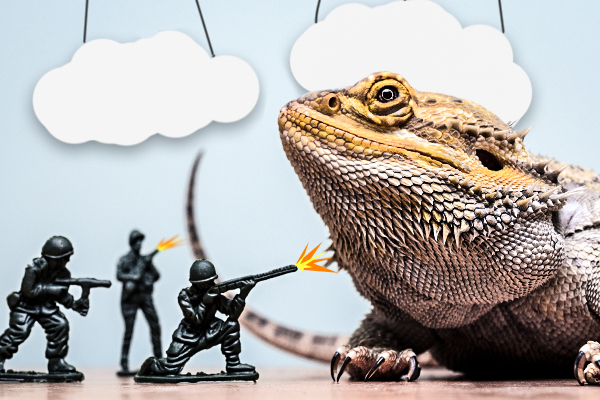The Importance of Practical Effects in Cinema
Movies used to be an entirely magical experience for folks. People would dress in their finest evening wear, find a suitable sitter for the children and hit the theater to be awed by the dazzling wonder of motion pictures. It seems now, however, in the age of constant blockbusters, people’s attention spans and willingness to attend a film, no matter how dazzling, is all but a distant memory from the silver screen era.
Films, even the incredibly modestly budgeted ones, boast computer effects that are typically varying degrees of impressive, but the practicality of a lot of it is missing. Filming in front of a green screen allows you the privilege to place your talent wherever you desire, but a human element is missing and interaction can be wholly artificial. As an example, it’s hard to act like you’re being threatened by a giant dinosaur when you’re simply looking at two tennis balls on a giant green stick; but fortunately for movie-goers, there are many actors with chops strong enough to pull it off.
Practical effects, for my dollar, have always been so much more appealing. You’re witnessing actual interaction. You’re seeing creatures and ideas come to life. The experience is far more theatrical and life-like in a sense. Folks behind the scenes are forced to be more creative and a lot of your favorite films implemented these ideas because they didn’t have the crutch of technology. There were no plug-ins and pre-rendered spaceships they could place in their films. If they wanted these things, they needed to come up with creative solutions.
Take a film like Georges Méliès 1901 French classic A Trip to the Moon; this is a piece that I feel stands the test of time for a lot of reasons. Sure, it’s a twenty-some-minute long silent picture with over-the-top acting and a wacky storyline, but Georges Méliès was a brilliant magician who was able to translate some of his most incredible ideas to the big screen. This was a feat that not many had attempted. He was a pioneer of divine in-camera effects; floating objects, explosions and all of the little things we take for granted in just about every modern action film.
The depiction of a foreign country was challenging for most to conceive during that time, but this guy was taking folks on a trip to an entirely different planet. (One that no Earthly being had ever visited, for that matter). Could you imagine going to the theater and seeing this sort of thing in an era where constant, growing information wasn’t at your eager fingertips no matter how quickly you desired it? This was a time where films truly were magical; because folks weren’t constantly being barraged with loads of trivial garbage on a minute-to-minute basis.
Movies like 2001: A Space Odyssey were created using miniature dioramas and in-camera effects to create unique space shuttles and realistic depictions of outer space that still hold up well by the standard of modern cinema. For the time, 2001’s special effects were so mind blowing to theater audiences, that folks became convinced that the moon landing was faked by Stanley Kubrick and his team. The ships and models that Kubrick used to build his science fiction landscape are honestly leaps more impressive than most of the criminally outdated effects studios shell out tens of millions of dollars for.
I’m not saying that all computer generated effects are terrible; I wouldn’t be able to do what I do without that crutch. My point, I suppose, is that there is true artistry in having to think ahead on how you’re going to create a physical effect. In The Day the Earth Stood Still, they needed to come up with a plan on how they were going to create flying saucers. In a foreign piece like Kwaidan the director and his team needed to figure out how they were going to create a ghost’s reflection in a glass of tea or floating wil-o-the-wisps in a decaying forest. In Jaws, Spielberg and his skeleton crew had to bring a giant great white shark to life.
Those films, from their respective decades, hold up a lot better than movies like The Matrix or any of the Star Wars prequels, whose effects have aged about as well as the graphics on a Nintendo 64. The original Star Wars trilogy, before George Lucas’s eventual meddling, walked a fantastic line of strong practical effects and clever use of blue screen technology. I appreciate modern film directors that follow this same sort of idea. Prometheus might not be everyone’s favorite film in the Alien franchise, but its set pieces and characters hold up substantially better than the CGI mess that became Alien: Resurrection.
If some major films tried a little harder to be human, people would have an easier time relating. The spectacle of seeing a special effects fest will always be there for the casual film goer, but the re-watch-ability of most modern cinema is relatively limited because within the span of years or maybe even a couple of months, the effects they’ve used throughout will appear incredibly dated. I enjoy watching a movie and having a hard time deciding which decade it came out. Practical effects ground film in a way that computer technology has never quite achieved.
Maybe my mind will change entirely in a decade where we’re watching life-like models of Cary Grant and Marilyn Monroe fighting to the death on a crumbling Jupiter, but until then, I’ll stay relatively pessimistic.
